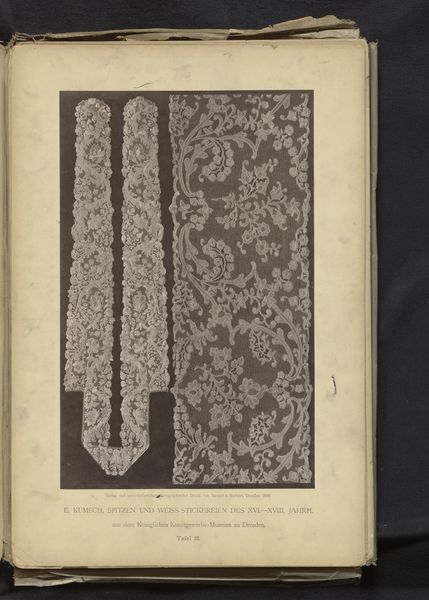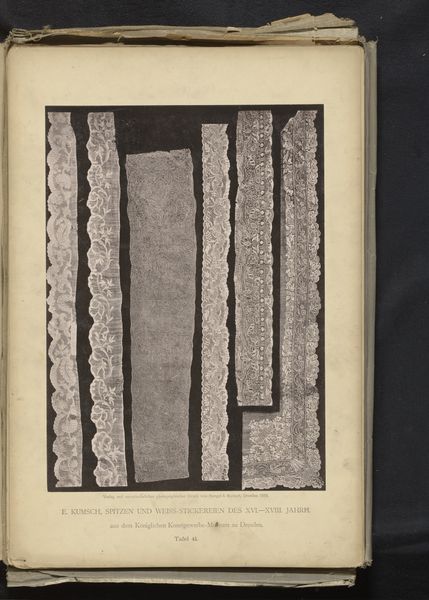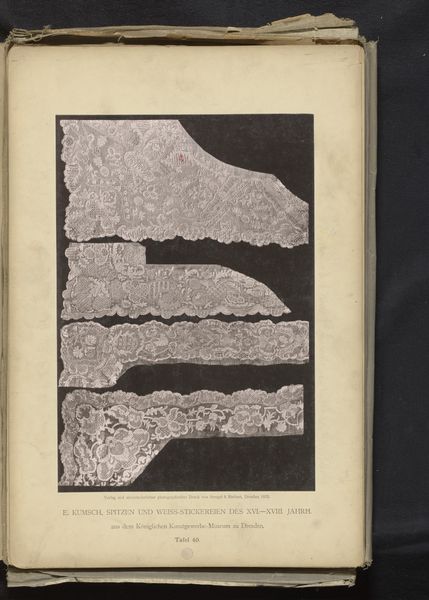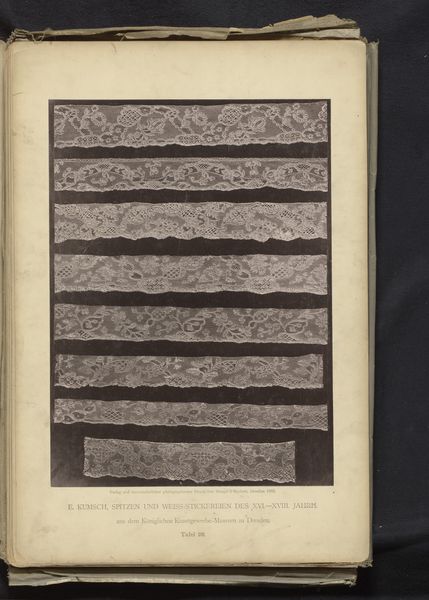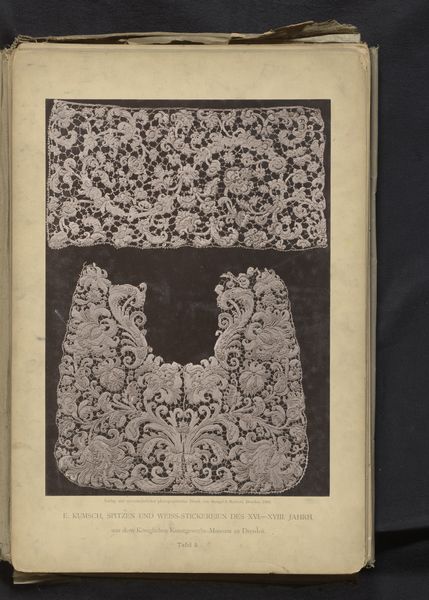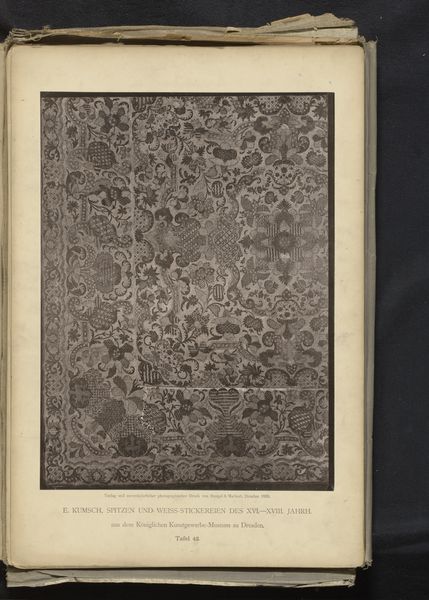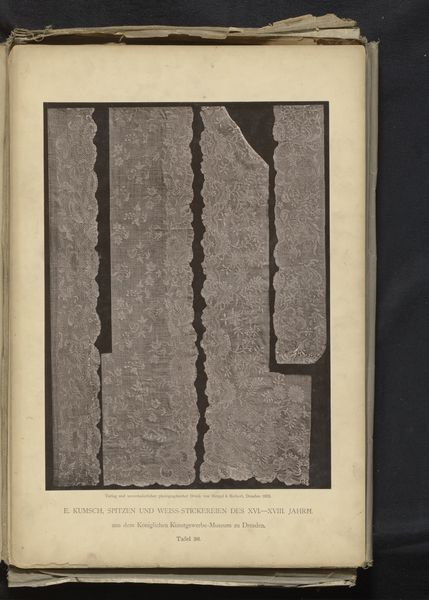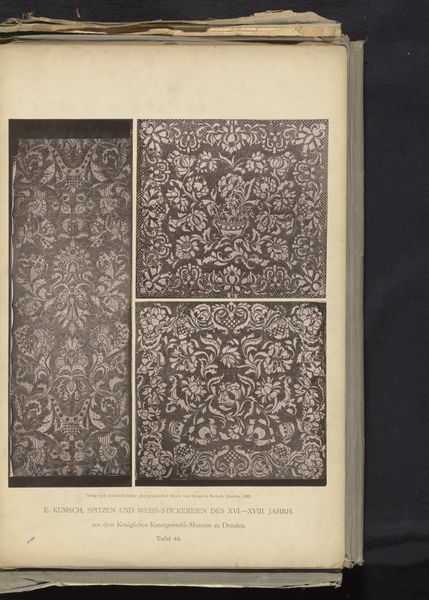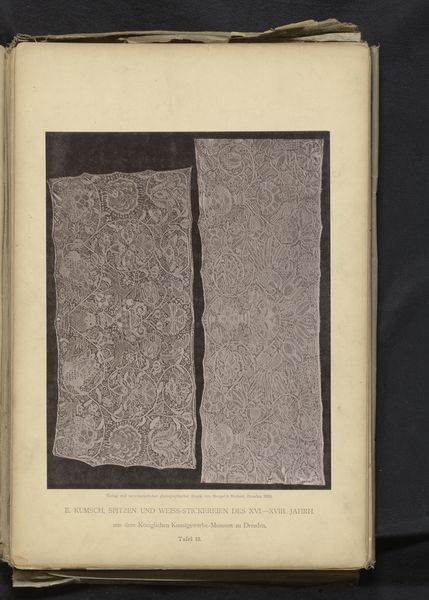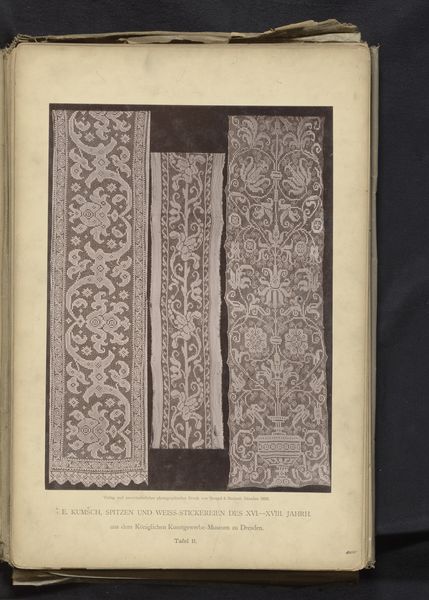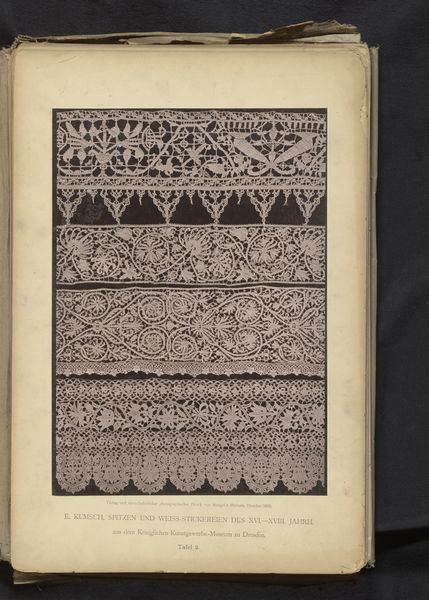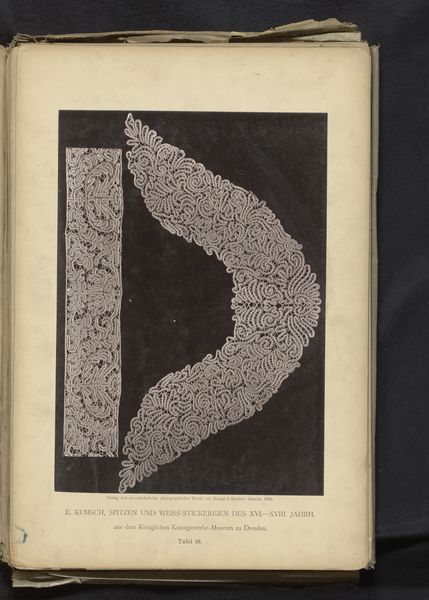
Drie stroken Duits kant uit circa 1770, uit de collectie van het Kunstgewerbemuseum in Dresden, Duitsland 1888
0:00
0:00
anonymous
Rijksmuseum
print, textile, photography
# print
#
textile
#
photography
#
historical fashion
#
history-painting
Dimensions: height 358 mm, width 254 mm
Copyright: Rijks Museum: Open Domain
Curator: Here we have a print from 1888 showcasing three strips of German lace, believed to date back to around 1770. These pieces originally resided in the collection of the Kunstgewerbemuseum in Dresden, Germany. Editor: Oh, isn't it mesmerizing? It’s like glimpsing whispered secrets of another era, all bottled up in these fragile threads. Curator: Indeed. Prints like this served a vital role in the 19th century, documenting and disseminating designs at a time when photography was still developing. This piece grants insight into the tastes and techniques prevalent in textile production, and historical fashion during the 1700s. Editor: You know, staring at the intricate patterns makes me feel oddly connected to the hands that made them. Did they dream as they worked? Argue? Gossip about courtly love affairs? Curator: Well, the labor conditions for textile workers, particularly women and children, at that time are definitely part of that story, although those historical details don't seem present on this print. Editor: That's an excellent point. There is something kind of haunting seeing a beautiful art form disconnected from the person, the real human hours and labour that actually went into its creation, isn't there? But the way they caught the light even in this static form. Can you imagine them adorning a gown, catching candlelight as someone moved through a ballroom? Curator: We can examine how shifts in social structures or technological innovations influenced patterns, production techniques, and ultimately, consumer preferences, during these eras. It's like archaeology through art. Editor: It all echoes… We are linked through strands of stories back through time. So much history—fashion, technique, cultural change. It feels quite grounding, in a strange way, just witnessing these patterns on the page. Curator: Precisely. That's the true appeal of prints: their accessibility, making craftsmanship and artistry available for broader study. A frozen moment for closer investigation, as you said! Editor: I'm leaving here wanting to adorn something with lace immediately. Or learn how to make it! Thanks to the artist of the textiles from the 1770's, and for you opening its stories!
Comments
No comments
Be the first to comment and join the conversation on the ultimate creative platform.
